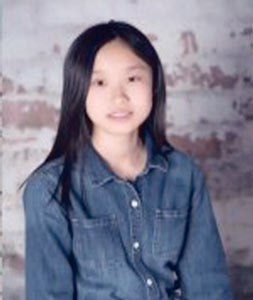
Christina Peng / Beckman HS 10th
As a young reader in Nigeria, Chimamanda Adichie was only exposed to Birtish and American children novels. So when she began writing at the age of seven, stories with pencil and crayon illustrations, she wrote exactly the kind of stories she was reading. “All my characters were white and blue-eyed. They played in the snow. They ate apples. And they talked a lot about the weather, how lovely it was that the sun had come out. Now, this despite the fact that I lived in Nigeria. I had never been outside Nigeria. We didn’t have snow. We ate mangoes. And we never talked about the weather, because there was no need to.”
Stories are powerful. Because Chimamanda only read foreign books as a child, she became convinced books had to feature foreign characters and had to be about subjects she could not personally identify with.
It was only until she discovered African books and writers like Chinua Achebe and Camara Laye that Chimamanda realized girls like her could also exist in literature. Her discovery saved her from the dangers of a single story to what books are.
Ellen Oh, president of the nonprofit We Need Diverse Books, protested for more diversity in children’s literature. She cited a 2014 Bookcon meeting where the most esteemed authors included only white men. The homogeneity in children heroes can impact young readers significantly. Diverse books teach kids it is okay to be different and no matter who they are and what they look like, they can be heroes too.
As response to the homogeneity in book characters, an LGBT teen said, “Maybe I wouldn’t have tried to kill myself if only I had seen that it was OK to be gay, it was OK to be trans.”
The single story creates stereotypes. And the problem with stereotypes is not that they are untrue, but that they are incomplete. They make one story become the only story. In a single story, children are taught there was no possible connection of various people as human equals.
Harvard panelists are campaigning for children’s books as a means to teach empathy as an inclusion by adding more authors from different cultures with different ideas into the author pool.
What we need to show the children is that other people are not something to be afraid of or hated. We need to show them that the other is a person just like you, just like me. We all share a common humanity despite all the hate, violence, and disasters erupting around us.
<
Christina Peng / Beckman HS 10th>

